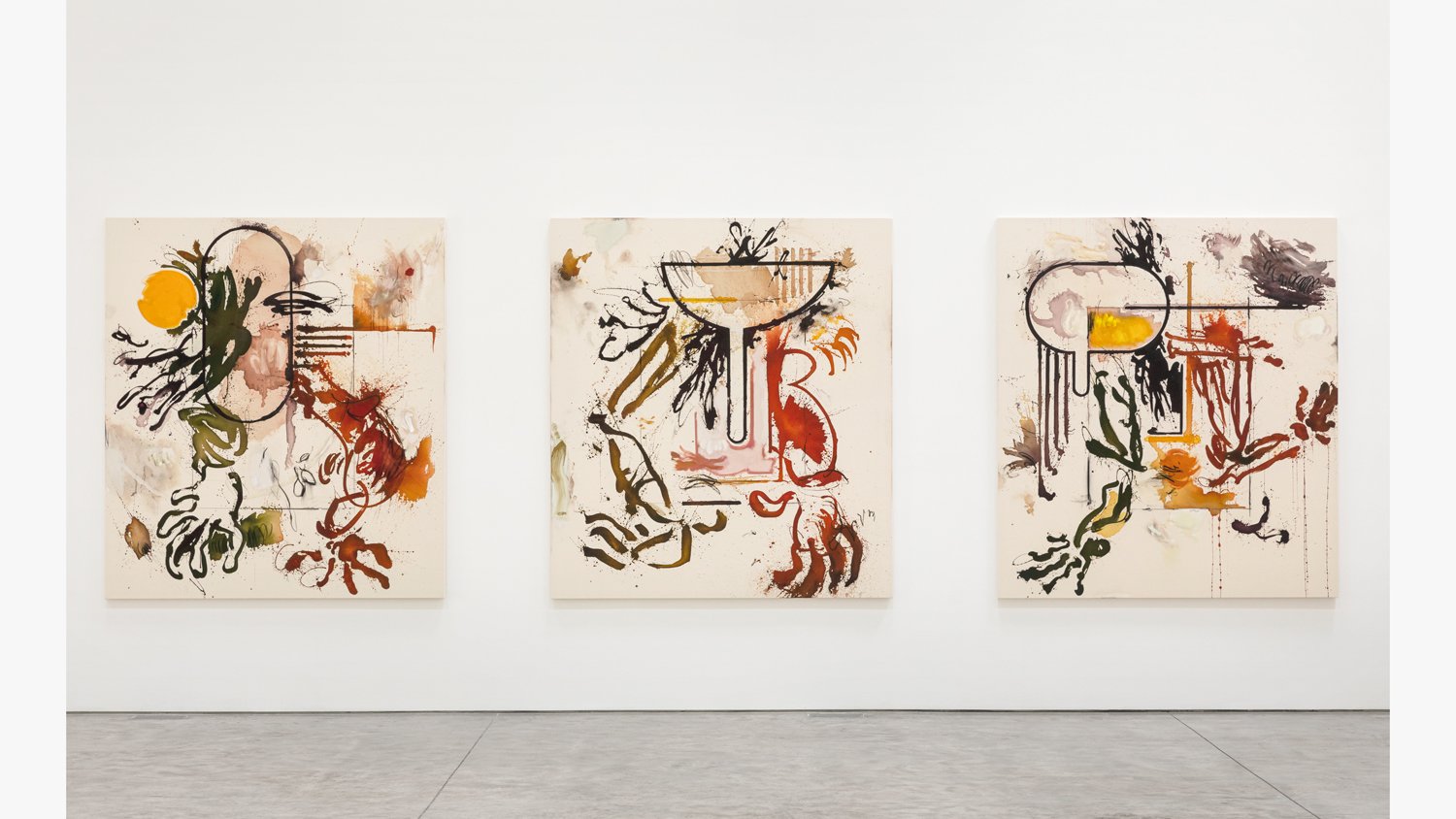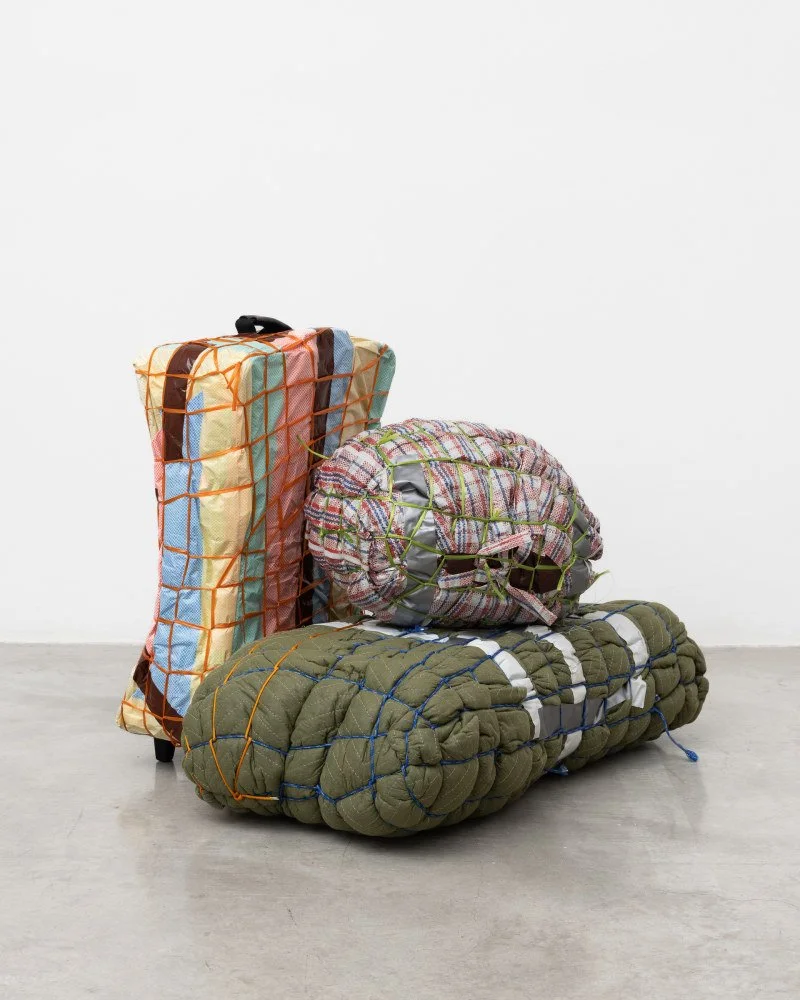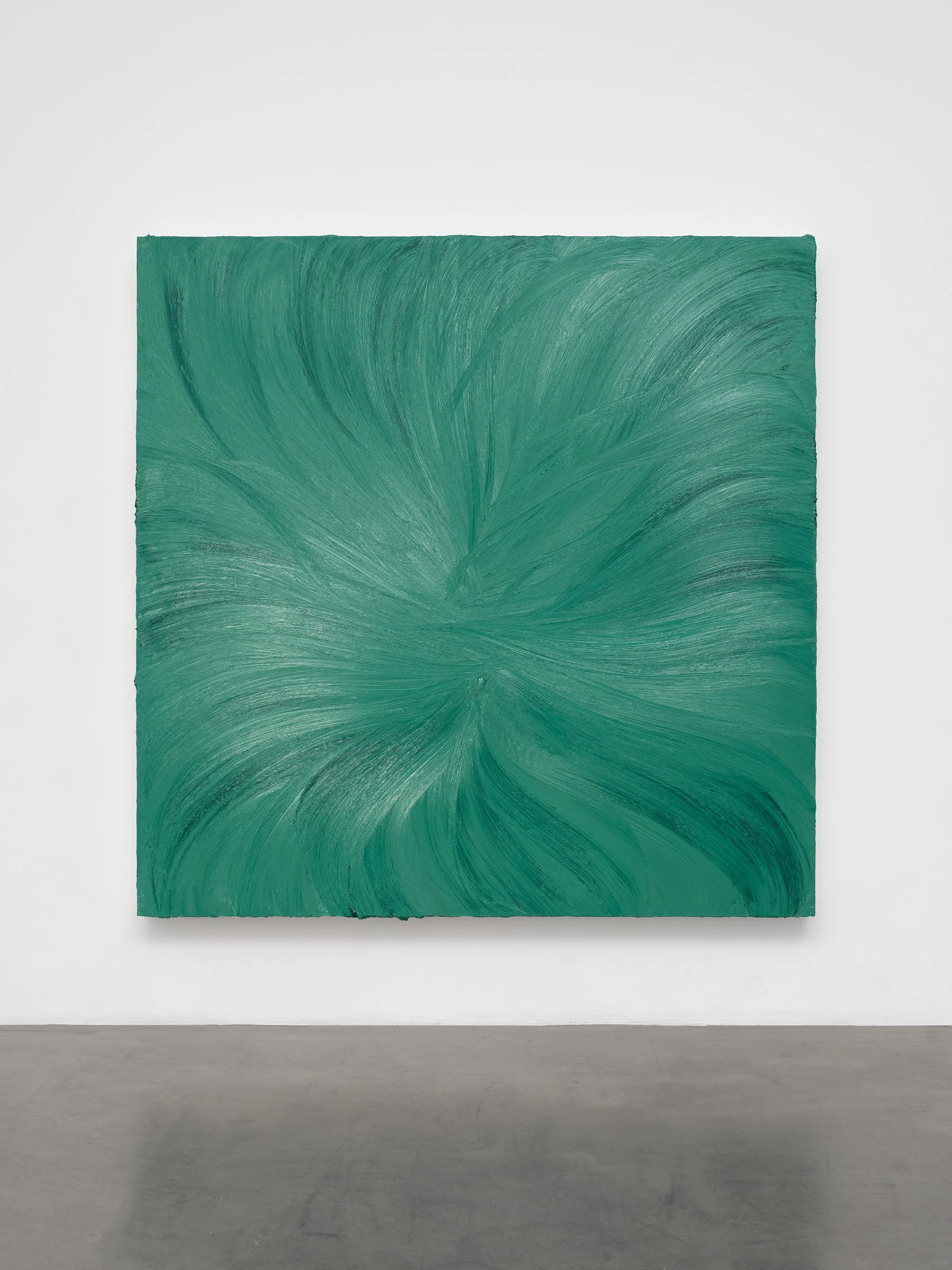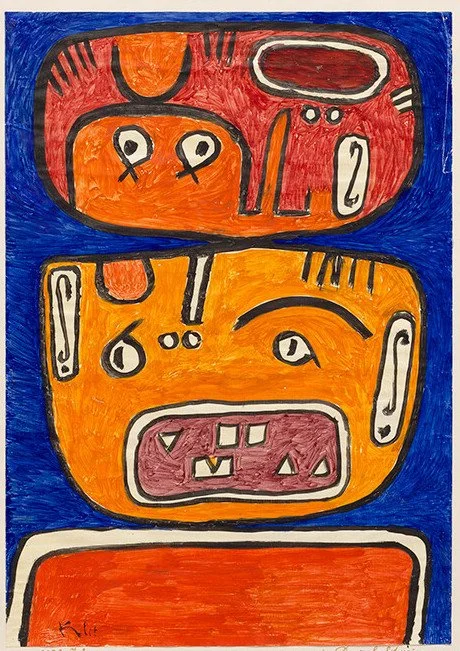Jan-Ole Schiemann
“New Paintings”
New York, 509 West 27th Street
Schiemann’s energetic constructions are characterized by boldly abstract figures, vivid cumulous color clouds, and an assertive, instinctive use of shape and line. The artist’s most recent compositions meld fragments and echoes from his former visual vocabulary with new devices that together push the language of gestural abstraction into new territories.
All photography by Mareike Tocha
The artist’s complex compositions begin as references drawn from archives of vintage animation and his own meticulous sketches. Using the edge of his rectangular picture plane as the first rule of play, Schiemann begins a game of decision-making, toying with the tension between process and image as he builds layers of charcoal, ink, gesso, and acrylic. In both his drawings and this new series of large-format horizontal paintings, Schiemann’s ongoing interest in the automatist instinct has led to expansive open areas at these edges. In the paintings, these are articulated as unprimed canvas that intersperse sharp fields of color in which the artist’s brushwork creates new dimensions of flux. Tools and materials from the studio, including cardboard sheets and wooden supports, contribute to the application of standardized marks of paint across canvases—an echo of Schiemann’s earlier work with stencils.
These various compositional strategies, expressed uniquely in each work, are anchored by the repetition of a loosely-rendered pair of pawed hands. One green, one red, they refer to the manual process of making (both in painting and in more general terms), the existential dilemma of “either-or,” and the effort to cohere thoughts pulling in contradictory directions.
Throughout, Schiemann conjures semi-discernable forms: petals, coiled springs, hot air balloons, an eye, piano keys, and headlike graphical outlines. Culled from both contemporary visual culture and his vivid imagination, these are subjected to destabilization in deference to the painting’s internal logic. Distinct in style from his older paintings, which collapsed the figure-ground relationship, Schiemann’s new works propose clearer divisions of space, utilizing color as an engine of this process.







